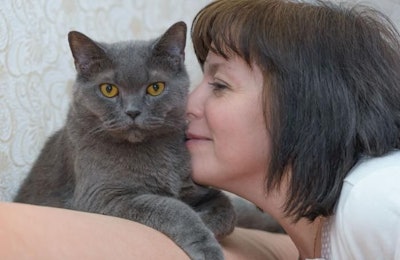
A demographic look back to 10 years ago confirms that Generation X—the generation currently aged 35–49, and sandwiched between the larger and much-marketed-to Boomer and Millennial generational peaks—is the great lost opportunity in the pet market.
Over the last 10 years, according to the Simmons Spring 2016 national consumer survey, the US population of dog-owning households increased dramatically by 10.8 million (or 28%), to reach 49.4 million. Generationally, however, the pattern was erratic:
- The number of dog-owning households with adults age 18–34 (the current adult Millennials) increased by 5 million (or 54%) compared to 2006.
- The number of dog-owning households with adults age 35–49 (the current Gen X) declined by 1.5 million (or 12%) compared to 2006.
- The number of dog-owning households with adults age 50–69 (the current Baby Boomers) jumped by 6 million (or 47%) compared to 2006.
Gen X pet-owning decline
Over the last decade, had Gen Xers followed the average pattern of the other generational cohorts, there would be 7.7 million additional dog-owning households in the US—that is, 19.1 million Gen X dog owners, rather than 11.4 million (see Table 1).

Table 1: Generation X households are the only generational demographic to see a decline in dog ownership from 2006 to 2016.
The growth in the number of cat-owning households over the last 10 years has been far more moderate, and the generational patterns for changes in cat ownership vary significantly from the patterns for pet dogs. Even so, the same trend holds for (and only for) Gen X.The number of cat-owning households with adults age 35–49 (the current Gen X) declined by 14% between 2006 and 2016, approximating the 12% decline in the number of dog-owning Gen X households. Had Gen Xers followed the average pattern of the other generations for cat ownership over the last ten years, there would be 2.7 million additional cat-owning households—10.6 million Gen X cat owners, rather than 7.9 million (see Table 2).

TABLE 2: Similarly, Gen X households are the only ones to see a decrease in cat ownership.
Gen X demographics and their effects on pet ownership
Looking more closely at Gen X pet owner demographics, two metrics stand out: home ownership and household income. In 2016, compared to 10 years earlier, there are 1.8 million fewer home owners age 35–49 with pet dogs, 1.7 million fewer home owners in this Gen X age bracket with pet cats, and 1.1 million fewer home owners in this age bracket with both pet dogs and pet cats.
Currently, similarly, there are 2.2 million fewer age 35–49 home owners with middle-range incomes (US$50,000–US$99,999) who keep pet dogs, compared with 10 years earlier, and 2.4 million fewer home owners with working-class to upper-middle class incomes (US$25,000–US$99,999) who keep pet cats. In the case of Gen Xers, the only gains in dog ownership over the last decade are among those with a household income of US$100,000 or more. In the case of cat ownership, the gains among Gen Xers split between those with a household income of under US$25,000 and those with a household income of US$100,000 or more.
Bringing back Gen Xers as pet owners
Two dynamics would help reclaim some of the lost opportunities for Gen X as pet owners and balance out the focus on pet market premiumization: pet care innovations that increase the practicality of pet ownership, especially for those without owned houses, and pet care options that remain affordable while meeting current pet wellness concerns and healthcare standards.
US pet food market information
For more Market Reports by David Sprinkle: www.petfoodindustry.com/authors/145.
For information on Packaged Facts’ pet population reports: https://goo.gl/ZAZmuz.



















